We know RAIN technology successfully bridges the physical and digital worlds providing many business-process and financial benefits. We also know sustainability has increasingly become a priority across all industries over the past several decades. Indeed, it is now a driving force of change as consumers, businesses, investors, and governments make sustainability a priority. As RAIN continues to expand, so too its environmental footprint grows. More RAIN labels are being manufactured and consumed than ever before as industry players, investors, governments, and end consumers discover the sustainability benefits from RAIN item-level tracking, bringing an inevitable impact on our world. Despite label manufacturers creating more ecologically friendly labels and sustainability being a priority, gaps of understanding remain.
- To what extent does RAIN equipment, tags, and items embedded with RAIN technology impact the earth?
- How will increased sustainability practices change the way our industry operates?
- What does sustainability mean for RAIN?
You might also like: What is RAIN? E-Book
To best understand how RAIN impacts our environment, it’s imperative to become knowledgeable and then intentional about being environmentally conscious, both on an organizational level, but also across the RAIN landscape. When the industry has defined what sustainability means in relation to RAIN and foundational research is laid, knowledge gaps begin to close and frameworks addressing sustainability by industry players can be replicated.
Presently, the RAIN Alliance Sustainability Workgroup is achieving this vision by conducting research and publishing documents for industry use, beginning with their first whitepaper, “Defining Sustainability for RAIN RIFD: Importance, Challenges, and Potential.” Focused on what currently applies to RAIN and sustainability, this publication lays the foundation for future, more detailed explorations of how RAIN and sustainability intersect. This paper fills in knowledge gaps with information to build on no matter one’s role in the industry.
- Why sustainability should be considered now rather than later.
- The importance of change management when integrating sustainability practices.
- How sustainability needs to be considered within the broader ecosystem of an individual organization.
You might also like: Digital Twins: A Primer
As RAIN continues to grow, integrating sustainable practices becomes critical, not only to create a positive impact on the world, but a growing body of evidence suggests it can also bolster revenue and create new business opportunities. Download the “Defining Sustainability for RAIN RIFD: Importance, Challenges, and Potential” whitepaper and discover your unique contribution to pushing our industry in an earth-friendly direction.
About the RAIN Alliance Sustainability Workgroup:
The workgroup’s vision is to better understand the environmental impact of RAIN equipment, tags, and the items they are embedded in to facilitate increased sustainability. To realize this vision, the workgroup conducts research and creates educational materials such as this whitepaper. In addition to examining the definition of sustainability as detailed in this publication, the workgroup also conducts research around the environmental impact of RAIN tags through the lens of a Life Cycle Assessment, as well as E-waste Regulations, and how they apply to RAIN in different regions around the world.
Learn more about all of RAIN Alliance’s Member-driven Workgroups.
